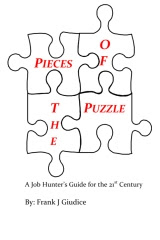What follows is a synopsis of a lecture presented at the Brookdale Community College by the Center for World War II Studies & Conflict Resolution.
“Burned by the Hiroshima bomb
then to Nagasaki was chased down
A double-survivor I have become
A Nagasaki native never undone.”
On the morning of August 6, 1945, Mr. Yamaguchi Tsutomu, a Nautical Design Engineer for the Nagasaki Mitsubishi Ship Building Corporation was heading to work. He was finishing up a three month assignment and was looking forward to going home to see his wife and 5 month old son. As he walked across a potato field, he heard the sound of airplanes overhead. They were sounds the residents of Hiroshima had been hearing for weeks, the American B-29. He watched as several parachutes descended to the ground (they were carrying a variety of scientific equipment to measure the effects of what was going to occur). A few moments later, his life changed forever.
“Standing with my entire body,
Scorched by pika-don, (flash-boom)
I looked up to the sky to see,
a giant mushroom cloud,
staring back at me.”
One of the planes was the “Enola Gay”, which carried a new type of bomb. The bomb was known as “Little Boy”. It was the first uranium bomb and was making its first appearance on the battlefield.
Mr. Yamaguchi was knocked unconscious from the force of the blast. When he awoke, he felt a burning sensation on his left side and was now deaf in his left ear. As he staggered to his feet, he watched the giant mushroom cloud grow. He began to walk toward work, to look for his colleagues. Everywhere he looked, he saw the devastation the atomic bomb has wrought. Buildings half standing, fires running wild and unchecked, bodies, in parts and whole, were littered among the wreckage. He saw firsthand the people who had died and those who survived the attack. He found a few colleagues and began to plan for tomorrow.
The next day, he and his fellow survivors began the long walk to the refugee train at the station, which was headed to Nagasaki. They walked through the irradiated city, still burning, filled with the cries of the living and dying and many corpses, whole and in parts, lying in the ruins of this once vibrant city. The smell of burning flesh lingering in the air.
Hiroshima is a delta city; build along the coast, with many tributaries emptying out into the Inland Sea. The men had to cross over streams and rivers to make it to the station. And here, in his own words, is what Mr. Yamaguchi saw and felt.
“The “black rain” that falls in my dreams.
The “human raft” that blocks the streams.
The after effects of the pika-don that consume my being.”
Corpses clogged the waters, floating together like “human rafts”. The men tried to walk over the bodies, but began to sink. Mr. Yamaguchi did not want to expose his injuries to the water. They looked for shallow areas so they could cross safely. It was a long, slow walk, surrounded by death, despair, and destruction. Eventually, they made it to the station and boarded the train to Nagasaki.
When they got to Nagasaki on August 8th, it found a mostly empty city. Because before the train arrived at the station, an air raid siren had sounded and the citizens of the city were hiding in shelters. Mr. Yamaguchi made his way to the Mitsubishi company hospital for medical attention. There he found a doctor who drained his arm of pus and cleaned and dressed his wounds.
On August 9th, Mr. Yamaguchi decided he had to go into work, to tell his bosses about what he had seen. His boss dismissed the story; basically telling him that as an engineer how could it be possible to build a bomb that causes so much damage?
At 11:02am, flying overhead was “Bockcar”, which dropped “Fat-Man”, plutonium based nuclear weapon. Once again, Mr. Yamaguchi witnessed firsthand the giant mushroom cloud overhead. But this time it was different, as the death and destruction had come to the city he called home.
This is just a small part of the story of Yamaguchi Tsutomu, survivor of two atomic blasts, husband, father, teacher, poet, and peace activist. His story and poems were presented by Chad Diehl, doctorial candidate from Columbia University, who translated and published the poems of his friend. His book, “And the River Flowed as a Raft of Corpses” is a series of poems which were written in tanka style and now are available. Tanka poems contain 31 syllables which carry a great deal of expression. They consist of five lines and are tightly composed. Mr. Diehl went on to tell us why, after years of silence, Mr. Yamaguchi spoke up about his experiences and shared his poetic voice with the world.
“My life is a dewdrop.
Living for fifty years after the atomic bombing.
I am still wishing for a nuclear free world.”
This was the first lecture presented as part of the 10th Anniversary Series at the Center for World War II Studies and Conflict Resolution. The center’s mission is to educate and inform students, teachers, and life-long learners of the historical, political, social, economic, cultural, and military aspects of the World War II era. The center presents a variety of topics and speakers each year who explore different aspects of the great conflict. The directors of the center are Dr. Paul Zigo and Dr. Laura Neitzel. For further information about the 10th Anniversary Series, go to www.brookdale.cc.nj.us and click on the World War II Center link on the left hand side.
History is always best when shared.
*Original poems written by Yamaguchi Tsutomu, translated by Chad Diehl. Published by Excogitating Over Coffee Publishing, 2010.
Tuesday, September 28, 2010
Subscribe to:
Posts (Atom)

